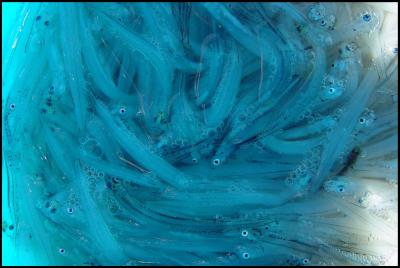Is whitebaiting sustainable?
As the whitebait season drew to a close around much of the country last week, some regions were reporting 'lacklustre' catch.

Freshwater experts say we can't tell whether the fishery is sustainable because there are no monitoring tools for the whitebait stock.
University of Canterbury research associate Dr Mike Hickford said the fishery has always been regionally patchy and varied from year to year.
"Our main problem with addressing the issue is that no one has comprehensive catch data so we have no idea what the longer-term trends are. We have no idea if fluctuations in the whitebait catch are even related to fish stocks, let alone whether the whitebait catch is in decline."
"I despair at the lack of data on the whitebait fishery. In the future, I envisage a whitebaiting licence much like a Fish & Game Sports Fishing Licence. Whitebaiters would buy the licence for the number of days they wanted to fish and would have to nominate rivers and regions," Dr Hickford said.
Massey University freshwater ecologist Dr Mike Joy went a step further and said whitebaiting should be restricted to recreational fishers only.
"Whitebaiting is a really important thing for New Zealanders. If we don’t fight to save this right, and we do nothing about habitat loss and pollution and commercial harvesting, then we’re going to lose it."
Dr Joy told Newshub that failing to look after the freshwater environment was "coming home to roost for us now we're seeing freshwater fish disappear".
“Give our whitebait, our native fish, the same protections that we give to introduced trout and salmon.”
Unitec senior lecturer Dr Stéphane Boyer said one of the big issues was that we don't know which species are being caught. "Whitebait is composed of five different species of fish but, as babies, they all look very similar. Among these five species, three are declining and one is recognised as a threatened species. "
“Yet we fish, sell and eat them all without distinction."
Dr Boyer is leading a research project that aims to identify whitebait species by DNA, which could lend itself to differentiating the endangered species at the juvenile stage.
Read the expert reaction on whitebait and a summary of media coverage on the SMC website.




 Business Canterbury: Urges Council To Cut Costs, Not Ambition For City
Business Canterbury: Urges Council To Cut Costs, Not Ambition For City Wellington Airport: On Track For Net Zero Emissions By 2028
Wellington Airport: On Track For Net Zero Emissions By 2028 Landcare Research: ANZAC Gall Fly Release Promises Natural Solution To Weed Threat
Landcare Research: ANZAC Gall Fly Release Promises Natural Solution To Weed Threat NZ Anti-Vivisection Society: Auckland Rat Lovers Unite!
NZ Anti-Vivisection Society: Auckland Rat Lovers Unite! University of Canterbury: $1.35 Million Grant To Study Lion-like Jumping Spiders
University of Canterbury: $1.35 Million Grant To Study Lion-like Jumping Spiders Federated Farmers: Government Ends War On Farming
Federated Farmers: Government Ends War On Farming



